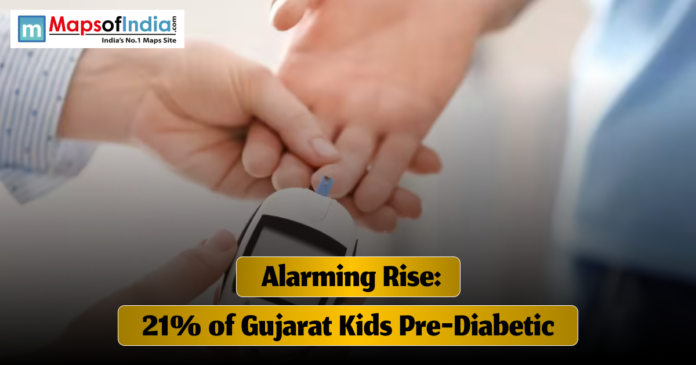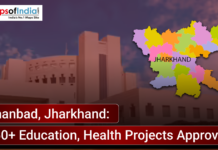There has emerged a serious health phenomenon in Gujarat, with recent statistics showing that a most alarming percentage of 21 per cent of children in the state are pre-diabetic, almost twice the national average. This has been a wake-up alarm to health experts, parents and even policymakers regarding the increasing risk of lifestyle ailments among the younger generation. According to the findings, in Gujarat, every fifth child is exhibiting early signs of diabetes, and this is a concerning trend towards non-communicable diseases among children.
Professionals explain this spike by the adaptation of their lifestyles, unhealthy eating habits and the lack of physical exercise in children. The dependence on fast food, processed snacks, and high-calorie drinks and the duration of time spent at the digital screens has increased the number of people who focus on a sedentary lifestyle. In cities, particularly, children are eating more and exercising less, which sets the stage for obesity and insulin resistance. Medical experts caution that, in case the trend remains the same, a high percentage of these pre-diabetic children might end up with full-blown diabetes during their teenage or early adulthood.
It is of great concern that pre-diabetes is barely noticed. Not all children will present symptoms that cause parents to ignore the initial symptoms, such as fatigue, excessive thirst or frequent urination. This undiagnosed condition may develop into type 2 diabetes, which is a chronic illness and requires management throughout a lifetime. According to medical specialists, the reversal of pre-diabetes can be done by early diagnosis and lifestyle change. By promoting healthy eating among children, exercise, and weight management, the risk can be minimized.
In addition to personal health, this increasing trend is a long-term problem for the healthcare system in Gujarat. It would translate into higher medical bills, low productivity and a further strain on the healthcare system by having a high number of young diabetics in the future. School-level screening programs are now being encouraged to be introduced to identify at-risk children at an early stage by the public health authorities. Also, nutrition, physical activities, and preventive health activities awareness promotion are being suggested to inform children and parents.
The statistics also indicate a larger change in lifestyle that has to be addressed in a collective manner. Along with schools, communities and governments must work in reaction to physical education, restrict the sale of junk food around educational establishments, as well as encourage the adoption of healthier diets. Without preventive actions, there is a high likelihood that Gujarat would be a country that produces a generation of adults with chronic metabolic disorders at a very tender age. The alarm statistics are a wake-up call to take action today and in the long run to protect the health of the children of the state.










